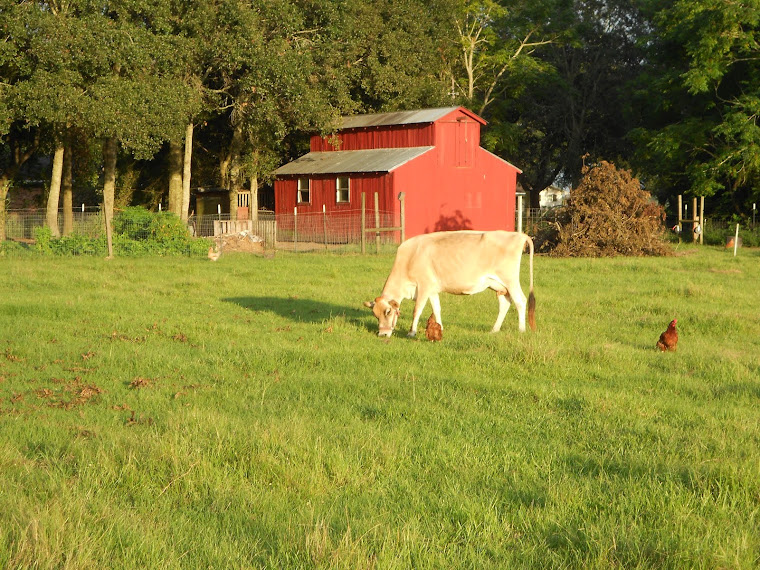We've never done this before on our own. As relatively new beekeepers we've made our share of mistakes, and we're certain to make more. We decided to make our own 'walk-away splits' this spring. A split is where you take a colony of bees, split it, and make two colonies of bees. It's like compound interest.
Of our four hives we had at the end of last year, we have two left. One was lost due to wax moths. The second is a mystery. Perhaps the queen died? Perhaps they were a little weak and the cold weather did them in? Whatever happened, we are told it is a common occurrence. "If you want a beehive, get two," they say. Some people lose all their hives, but they catch more swarms and resume.
Tricia and I put on our suits and unstacked one of the hives we lost. Here she is cleaning the bottom board. She'll put that back down as it will serve as the base for one of our splits.
The two remaining hives appeared to be very healthy, and that is a must in order to make splits. You'll note that we have two deeps with a queen excluder and then medium supers on top. To make a walkaway split, you simply move one of the deeps and put on top of a bottom board and you're done. But there's a few things you need to check before doing that.
Despite not feeding our bees, they have plenty of stores of honey in the supers. This is money in the bank. Spring has arrived and the bees are bringing in nectar and pollen and will have lots of honey to spare when we pull honey in the summertime!
| Capped honey in the supers |
Then we got down into the deep boxes. We used our smoker to calm the bees. One hive is naturally calm. The other hive is aggressive and get up in your face. The first thing you want to see is drones or at least capped drone cells. The drones are the males and you need males so that when a new queen is made, there will be drones in the area (from your colonies or another) for the virgin queen to mate with. We went through the boxes and found capped drones. Good news. The drone cells are laid on the bottom as their cells are larger and don't fit in the regular foundation.
| Nurse bees and eggs |
What happens if the split didn't work? Well, we'll be disappointed, but we'll stack the boxes on top of the existing healthy hives and we will try to make another split OR we'll try to catch wild swarms in the yard. We actually got called to go get a swarm in someone's yard last Saturday, but we had company over. When the company left, we put on our suits and started to go, but the swarm had left! Oh well. We'll keep you posted with our first attempt of making splits.

No comments:
Post a Comment